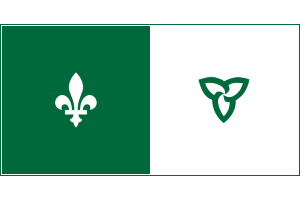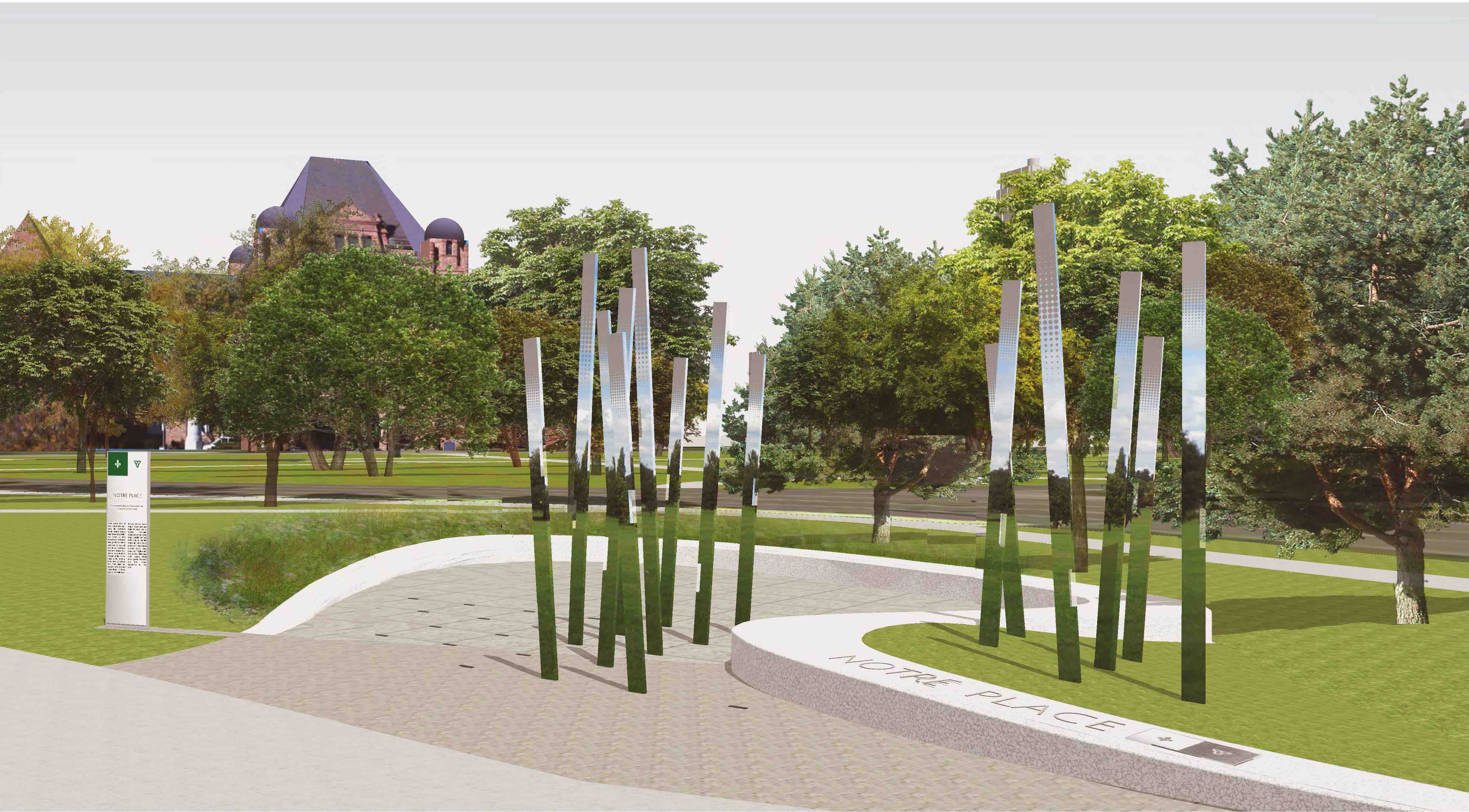Franco-Ontarian history
Explore – and celebrate – Franco-Ontarian history.
400+ years
As a Franco-Ontarian, you are part of a community going back more than 400 years.
Starting in 1613, French explorer Samuel de Champlain travelled – and mapped – parts of Ontario. He followed the water: the Ottawa River, Lake Nipissing, the Great Lakes and Georgian Bay.
On August 1, 1615 Champlain and his First Nations guides and allies arrived on the shores of Georgian Bay, near what is now Penetanguishene, where he was greeted by Chief Aenon of the Wendat (Huron).
He spent the next eight months with the Wendat and Anishinaabe before departing for Quebec the following spring. This was the longest, most extensive and westernmost of his travels in the lands that would one day become Ontario.
400th anniversary commemoration
Throughout 2015, we commemorated the 400th anniversary of Champlain’s exploration of Ontario. After all, it is the starting point of the Francophone community’s cultural, social, economic and political contributions to the province.
This included:
- Rotary Champlain Wendat Park, a restored and enhanced 400th-themed commemorative park in Penetanguishene
- An official provincial plaque given to France by Ontario, marking Champlain’s departure from the Port of Honfleur to the province
- A virtual exhibit of historical Franco-Ontarian artefacts showcasing the historical significance and contribution of the French presence in Ontario over the past four centuries.
Franco-Ontarian Day and flag
There are more than 622,000 Francophones and 1.5 million Ontarians who can speak French, making Ontario Canada’s largest Francophone community outside of Quebec.
September 25 is Franco-Ontarian Day, a time to celebrate your community and its history. It was officially named Franco-Ontarian Day in 2010.
The Franco-Ontario flag flew for the first time on September 25, 1975, at the University of Sudbury. It was created by history professor Gaétan Gervais and political science student Michel Dupuis.
The flag became the symbol of the Franco-Ontarian community and was officially recognized in 2001.
Read the Franco-Ontarian Emblem Act.
Flag design
The Franco-Ontarian flag consists of two vertical bands. The first band is green with a white lily. This flower represents the French-speaking community worldwide. The second band is white with a green trillium, the provincial flower of Ontario.
The designers chose green to evoke summer, while white brings to mind winter. Together the two colours represent the two poles of Ontario’s climate.

Note: The green border you see on the flag here is used for contrast. It does not appear on the actual flag.
Queen’s Park monument dedicated to Franco-Ontarians
The Franco-Ontarian monument honours the outstanding contributions of Franco-Ontarians to the cultural, economic, and historical development of the province.
You can find this monument on the north-west corner of University Avenue and College Street in Toronto, on the Western Gateway Lawn.
Titled “Notre place” (our home), it celebrates the key role that Francophones play in shaping Ontario’s history and building a modern, open and inclusive society. It has three essential elements:
- le sentier (the path)
- la forêt (the forest)
- la clairière (the clearing)
These elements represent the centuries-long journey of Francophones as they helped build Ontario.
The monument is a public space where a series of long, thin mirror polished stainless-steel columns of various lengths clustered together symbolize the concept of a journey and a gathering place. These columns also remind us of the diversity of the Franco-Ontarian community.
The paving stones are an innovative design made of Ontario grey granite, engraved with discrete patterns that evoke the demographic evolution of the province's Francophone community.
"Notre place" was designed by the architectural firm Brooke McIlroy, in consultation with a committee that included historian Michel Prévost.

Ontario within the national and international Francophonie
As a Franco-Ontarian, you are part of a larger Francophone community — the Canadian and international Francophonie.
Ontario within the Canadian Francophonie
Ontario is a member of the Minister’s Council on the Canadian Francophonie (MCCF), an intergovernmental organization made up of federal, provincial, and territorial ministers responsible for:
- French-language services
- Francophonie
- official languages
Ontario was at the table for the first meeting of officials in 1991 and has been a member since the MCCF was officially created in 1994.
Ontario is active in all major files that rely on intergovernmental collaboration, including:
- justice
- tourism
- immigration
- modernizing the offer of government French-language services
Ontario is a member of the executive committee and the French Language Services Committee. Since 2021, Ontario has been the sponsoring province leading a study on the bilingual workforce shortage.
Federal, provincial, and territorial ministers meet every year to discuss issues and develop services to support the Francophone community in Canada.
Ontario within the international Francophonie
Ontario is also an observer member of the International Organisation of La Francophonie. Representing Ontario is part of the Ministry of Francophone Affairs’ mandate, and it is an important part of our annual plans.
The International Organisation of La Francophonie represents 88 member states and governments, with a combined French-speaking population of 321 million. That market is expected to grow to nearly 700 million by 2050.
Priority areas for action within the institutional Francophonie are:
- education
- training
- gender equality
We look forward to continuing to work closely with the organization and its members and to promote the richness of the Francophonie.
Get the flag on your licence plate
Get an Ontario licence plate with the Franco-Ontarian flag on it.
It’s one of the licence-plate graphics you can order online from ServiceOntario. Find it in the heritage section to see what it looks like.
35+ years
Your right to receive government services in French in Ontario is protected by the French Language Services Act. See the major steps taken since that law was passed in Ontario.